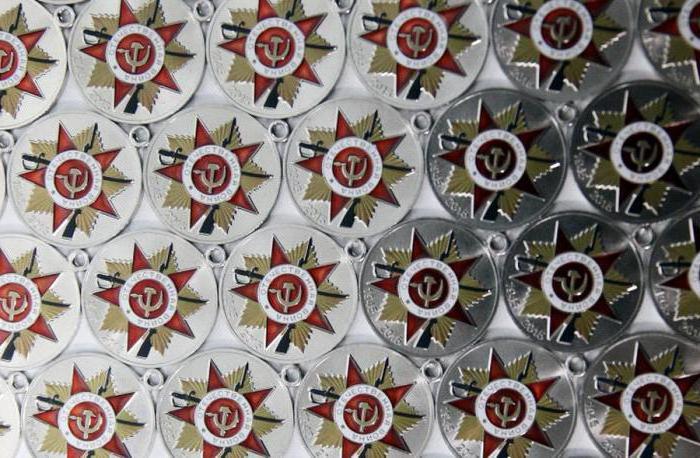How many Il-2 attack aircraft were built (1941-1945)
Along with the T-34 tank, automatic PPSh, a symbolVictory by right is considered to be the Il-2 attack aircraft. 1941-1945 became the time of testing for the strength of the Soviet state, they showed the titanic capabilities of domestic industry, which managed to deploy the world's largest mass production of military aircraft in a short time. During the war, the "humpbacked" Elians built more than 36,000. Such a "circulation" the story did not know before. This record is not beaten today.

Two attack aircraft
In the late thirties, the general conceptoffensive tactical means of all countries had an aviation component. The wars in Spain and on Khalkhin-Gol showed that without the support of aircraft, it is difficult to make an attack, and air supremacy ensures success on the ground. During this period a certain class of aircraft, called storm troopers, was formed. The most famous of its representatives during the Second World War were two samples - the German Yu-87 and our IL-2. 1941 was the beginning of their practical comparison. The main characteristics for clarity are given in the table.
Parameter | Ю-87 | IL-2 |
Take-off weight, kg | 5100 | 5788 |
Engine power | 1200-1400 | 1665-1760 |
Speed | 370-400 | 410 |
Armament course | 2 machine guns 7,92 mm | 2 cannons 23 mm, 2 machine guns 7.62 mm |
Rear hemisphere protection | 1 machine gun 7,92 mm | 1 machine gun 7.62 mm |
Combat load | 250-500 kg | 600 kg |
Projectiles | no | 4-8 RS-82 |
Chassis | non-selectable | retractable |
Reservation | local (seats) | armored hull |
In fairness, it is worth mentioning thatThe Il-2 was designed somewhat later than the German car (five years for aviation - a long time). In addition, the Junkers-87 had an undoubted advantage in making point shots due to the possibility of an almost vertical dive and perfect aiming system.
Nevertheless, for most indicators, the German attack aircraft is inferior to the Soviet Il-2. 1941 was the date of the beginning of its mass production. It began in February, before the war.

Basic concept
In the autumn of 1939 the famous pilot V.K. Kokkinaki raised a secret "product" in the air under the TsKB-55 index, in the narrow circles of the Soviet military-technical elite, also known as BSh-2. It was just a prototype, with the finalization of which the IL-2 aircraft turned out. The Sturmovik was developed in accordance with the revolutionary concept that such parts of the fuselage as frames and spars were practically abolished, and the armored corps took over the armored hull, which simultaneously shields the crew and vital units from the damaging factors, including the engine, oil cooler and fuel tank . Previously, airplanes were built differently: a skeleton of transverse and longitudinal profiles was fitted with a shell, sometimes armored. S. V. Ilyushin reacted to the question of vitality with all attention.

Means of struggle for vitality
The most vulnerable point of the plane is its rearhemisphere. "Going in the tail" means almost guaranteed to win an air victory. The shooter controlling this dangerous zone is present on all bombers, including the U-87. The IL-2 aircraft differed from the world analogues in that it was produced in two versions: single and double (but more about this later). Fuel tanks had a unique design, which allows to minimize fuel losses in case of their lumbago. A special substance, freezing in the open air, "healed" the wounds received in battle.

The armored glass of the lantern protected the pilot in the same way asmetal cabin. These and other design techniques proved to be so effective that Soviet ground-attack planes returned to their airfield, even after receiving five hundred holes.
Main options
A total of six modifications have been developed, butthe main two deserve a special description. Initially, Ilyushin was planning a double ground-attack aircraft with a radio gunner protecting the rear hemisphere. However, the military doctrine, which prevailed at the time, assuming absolute superiority in the air after the infliction of an instant crushing blow and the transfer of hostilities to the territory of the enemy, prompted the country's leadership to build simpler machines. The general designer was instructed to "remove the excess". The fallacy of this decision (and many others) was revealed by the war that had begun soon. Il-2, deprived of protection, became easy prey for the Messers. Mechanics at the rear airfields began self-alteration of aircraft, cutting out holes for the nest arrow in the upper shell. Stalin's leadership, however, can not be blamed for stupid persistence. The double scheme was again given a "green light", although, unfortunately, the shooter remained unprotected.

"Younger brother" IL-10
Undoubtedly, this legendary aircraft representeda masterpiece of aircraft design thought, but the features of tactical use at low altitudes caused a high level of losses of Il-2 attack aircraft. 1941-1945 formed general statistics, according to which on average Ilyushin made approximately 53 sorties before being knocked down. At the final stage of the war, an advanced version of the front-line attack aircraft was prepared, the design of which took into account the shortcomings of the prototype: the aerodynamics were significantly improved (the chassis was retracted into the wing, and not into special gondolas, the oil radiator was hidden from the "underbelly" into the fuselage), the arm and etc.

This modification received the designation Il-10 and even had time to fight in the Second World War and in Korea, but not for long. The era of jet speeds began ...
</ p>




